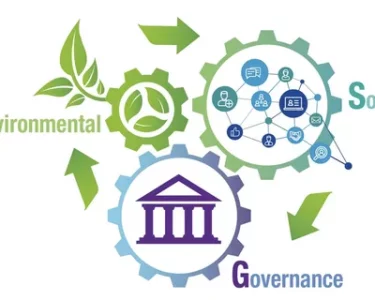The US job market has been experiencing a significant decline in the number of new job openings for the past two years, leaving many wondering what could be causing this trend. Is it due to the ongoing COVID-19 pandemic? The rise of automation and gig economy jobs? Or perhaps something else entirely? In this blog post, we explore the possible causes behind why job openings are at their lowest point in two years and hear insights from experts on what this means for the future of employment opportunities in America.
Job openings in the US are at a two-year low
According to the latest data from the Bureau of Labor Statistics, job openings in the United States have reached a two-year low. This trend has been consistent across various industries and regions throughout America.
The decline in job openings is concerning for many reasons. It suggests that businesses are not expanding or hiring as much as they used to, which could lead to economic stagnation. Additionally, it makes it harder for those who are unemployed or seeking new employment opportunities.
In recent years, there has been growing concern about the impact of automation on jobs in America. Many experts believe that increased use of technology and artificial intelligence could be contributing factors to this decline in job openings.
However, others argue that there may be other important factors at play such as changes in consumer behavior due to COVID-19 restrictions. As more people shift towards online shopping and remote work environments become more prevalent, some businesses may need fewer employees than before.
Regardless of what’s causing this downturn in job openings – one thing is clear: policymakers must take action if we hope to reverse this trend and ensure Americans can find meaningful employment opportunities moving forward.
Experts weigh in on the reasons why
So, why are US job openings at a two-year low? Experts have weighed in on the reasons behind this decline. One of the most significant factors that contributed to this trend is the Coronavirus pandemic.
According to experts, businesses had to cut down on their workforce due to economic disruptions caused by COVID-19. As a result, many people lost their jobs and were unable to find new ones as companies aren’t hiring as much as before.
Another factor that comes into play is automation. Many roles that were once performed by humans can now be handled by machines or software, causing a reduction in job openings. As technology advances further, it’s expected that even more jobs will become obsolete.
The gig economy has also played its role in contributing towards lesser job opportunities in the traditional sense. With freelance work and contract-based assignments becoming increasingly popular among members of younger generations or those seeking flexibility over stability – it affects traditional employment patterns negatively.
There’s been an ongoing skills gap within the US workforce for some time now. This means employers often struggle to find candidates with specific skill sets required for certain positions leading them not filling up vacancies even when they exist.
While these are just some of the reasons behind declining job openings across various industries nationwide – only time will tell whether things will improve post-pandemic!
The impact of the Coronavirus pandemic
The coronavirus pandemic has had a significant impact on the US job market, which is reflected in the current low numbers of job openings. The pandemic caused many businesses to shut down temporarily or permanently, leading to massive layoffs and high unemployment rates.
One major reason for this decline in job openings is that most employers are still trying to recover from the economic damage caused by the pandemic. Many companies were forced to cut costs and reduce their workforce to stay afloat during these uncertain times.
Moreover, remote work has become more common due to COVID-19 restrictions and safety measures. This change has resulted in fewer physical office spaces and therefore less need for hiring new employees. Companies have also started shifting towards automation as a means of reducing human contact.
Furthermore, with restrictions easing up across America following vaccination drives, there’s now an increase in demand for employees – but many workers remain hesitant about returning back into offices due to concerns over catching Covid-19 at their workplace.
It seems like we will continue seeing fluctuations within the US jobs market until all sectors stabilize post-pandemic.
The effect of automation on job openings
Automation has been a hot topic in the workforce for years. As technology continues to advance, more and more jobs are being automated. This means that tasks once completed by humans are now being done by machines. While automation can lead to increased efficiency and cost savings for companies, it also leads to job loss.
One of the biggest impacts of automation on job openings is in manufacturing. Machines have replaced workers in many factories, leading to a decline in manufacturing jobs. Additionally, automation has had an impact on administrative roles such as data entry or call center work where chatbots and AI assistants have taken over.
However, it’s important to note that while some jobs may be lost due to automation, new ones may emerge as well. For example, businesses need skilled programmers and engineers who can design and maintain these automated systems.
In order for workers to stay relevant in this changing landscape, they must adapt their skills accordingly. Those with technical expertise will likely be able to find opportunities working with automated systems while those without could face challenges finding employment.
While automation may lead to job loss initially, it also presents opportunities for innovation and growth within certain industries. It’s up to individuals and businesses alike to navigate these changes effectively so that everyone has the opportunity for success in the digital age.
The role of the gig economy
The gig economy, which refers to a labor market characterized by the prevalence of short-term contracts or freelance work rather than permanent jobs, has been growing in recent years. It has become an increasingly popular option for individuals seeking more flexibility and autonomy in their work.
One reason why the gig economy may be impacting job openings is that it allows companies to hire freelancers or contractors on a project-by-project basis instead of hiring full-time employees. This can save companies money and reduce their need for long-term commitments.
However, some experts argue that the growth of the gig economy could also contribute to a decrease in overall job security and stability. Freelancers and contractors typically do not receive benefits such as health insurance, retirement plans or paid time off. Additionally, they may struggle with inconsistent income streams.
Another potential factor is that many individuals who participate in the gig economy do so out of necessity rather than choice. They may be unable to find traditional employment due to factors such as lack of skills or education, discrimination or geography.
While there are certainly benefits associated with the rise of the gig economy, it remains unclear how this trend will impact job openings over time.
The skills gap in the US workforce
The skills gap in the US workforce is one of the main reasons why job openings are at a two-year low. Many employers struggle to find workers with the necessary skills to fill their available positions, leading to a backlog of unfilled jobs.
One reason for this skills gap is that technology and automation are changing the nature of work. As industries become more automated, workers need new and different skill sets to remain competitive. However, many workers have not received adequate training or education to adapt to these changes.
Another issue contributing towards the skills gap is that certain sectors face a shortage of qualified candidates due to demographic shifts such as an aging population or migration patterns. The result is fewer people entering particular fields, leaving companies struggling to find suitable employees.
There’s also been a decreasing emphasis on vocational training programs which provide hands-on experience and technical instruction for various trades and professions such as plumbing or carpentry. Despite being essential in many areas of employment, these types of courses have lost funding over time resulting in fewer individuals pursuing careers in these fields.
It’s clear that addressing the current skills gap will require serious effort from all stakeholders involved including policy makers institutes who can help bridge this divide between employer expectations and worker readiness through targeted initiatives & retraining programs aimed at bolstering specific skillsets needed across multiple industries within America’s economy today
Conclusion
The decline in job openings in the US has been attributed to various factors such as the Coronavirus pandemic, automation, and a skills gap among workers. While these challenges are significant, they can be overcome with innovative solutions that focus on reskilling employees for emerging industries and creating new jobs through technology.
It is important for policymakers and business leaders to collaborate on strategies that prioritize education and training programs, promote entrepreneurship and innovation, and invest in infrastructure to create jobs. By doing so, we can ensure that our workforce remains competitive in a rapidly changing global economy.
Ultimately, while job openings may fluctuate over time due to various economic factors beyond our control – it is up to us as a nation to take proactive measures towards building a resilient workforce capable of weathering any challenge.




